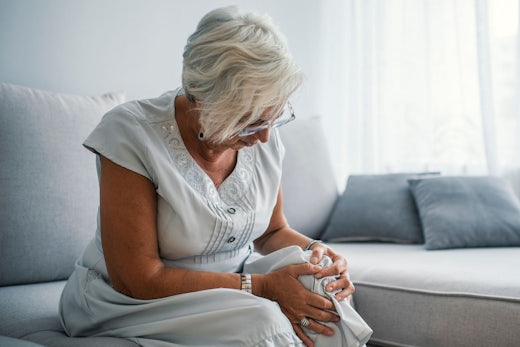ROYAL COMMISSION: Individualised based care provides good results
The final day of the Cairns hearings for the Royal Commission into Aged Care Quality and Safety heard about a different model of care that provides residents with respect, dignity and choice within a safe “micro-town” and how the current clinical model doesn’t allow for person-centred care.
![<p>House Companion Leader, Lisa Jones says an individualised model of care is the best way to provide care services to residents compared to normal nursing homes. [Source: Aged Care Royal Commission]</p>](https://agedcareguide-assets.imgix.net/news/articles/news/articles/Screen-Shot-2019-07-17-at-11.32.54-am.png?fm=png&format=auto&w=550&q=65)
House Companion Leader, Lisa Jones says an individualised model of care is the best way to provide care services to residents compared to normal nursing homes. [Source: Aged Care Royal Commission]
Three witnesses from NewDirection Care Bellmere in Queensland, two staff members and a resident, gave their evidence about the successful implementation of person-centred care and individualised care within the current aged care financial climate.
Elsie Scott, an 89-year-old resident at NewDirection, wanted to move into a facility with one-on-one service and staff that really cared about her wellbeing, which she was able to find at NewDirection Care Bellmere.
Unlike other facilities Mrs Scott had seen, the Bellmere “micro-town” didn’t fit the traditional aged care facility layout mould and had individual houses full with several residents with similar interests, no matter their care requirement.
Mrs Scott enjoys the independence she has and is glad every aspect of care she requires is covered in a personal manner.
She still has choice in both her daily routine or meal requests and has good relationships with house companions that provide care to her.
Mrs Scott says this model of care really “takes aged care into the 21st century and beyond.”
Also on the stand was House Companion Leader at NewDirection Care Bellmore, Lisa Jones who says this new model of care she is able to provide is absolutely the best way to provide services to residents compared to traditional aged care facilities.
“I’ve worked in [traditional aged care facilities] for many years and it took a toll on me as a person because it was really sad and quite morbid to go there. I felt that a lot of staff were there just for a wage, they didn’t actually care,” says Ms Jones.
“Because the staffing was quite tight and the timing, all of the duties that we had to do in the time allocated, there wasn’t time and we were discouraged from developing relationships.
“[The attitude of the leadership] is extremely important because it does start from the top. If you feel listened to and supported to carry out your House Companion role, it makes it much easier and you feel valued and like you are actually making a positive difference.”
Ms Jones added that having a Certificate III in Aged Care automatically guarantees you a job, whether or not you care about the work.
She would like to see a change in the aged care hiring system where it’s not just about having the qualifications but also the right attitude and care values, so person-centred care is appropriately provided to residents.
Following Ms Jones was the Chief Executive Officer (CEO) and Founder of NewDirection Care Bellmere, Natasha Chadwick, who explained the different environment available at the facility and the importance of its individualised care model.
The Bellmere “micro-town” is fairly new, only commencing aged care services in 2017, however, the company has been around since 2012 undertaking research into good aged care and what needs to change to provide quality services.
Compared to traditional aged care facilities, the average age of residents at NewDirection is 77 years old due to Bellmere providing care to older people who are frail, people with dementia, younger people with early onset dementia and people with disability.
The whole culture around providing care and placement of individuals at NewDirection Care is different to mainstream models of care, says Ms Chadwick.
Ms Chadwick says, “The point is they don’t live in a facility, they live in a community. And so, the challenges are quite different, I think than what you have in traditional aged care. We are able to place residents based on their values. So younger people are living with younger people or they might be living with a mix of older and younger people.
“The biggest thing we have done, and we talk about having turned aged care on its head. We mean that in terms of pretty much everything that we do in aged care. So our building design, instead of building a large nondescript institutional building or even an aged care hotel, if you like, what we have done is build a community.
“We have got a hairdressing salon, we’ve got a local shop, a corner store, the wellness centre, the spa, café and all of those services are available to the external community as well. They are not just for the people who live in the micro town.”
The home and town-like facilities still give older residents the sense they are in a community and have their independence, while having access to 24 hour care if they require it, along with other allied health services.
Since 70 percent of the occupants at Bellmere have dementia in some form, it resulted in all staff receiving dementia training no matter their position.
The main goal of Bellmere is to provide individualised care, and they are still able to operate within the normal aged care funding other traditional homes operate under.
“When the ground is moving beneath you, it is very hard to innovate. You need a certain level of sustainability and knowing what’s going forward to be able to innovate. We can’t innovate as an industry on our own,” says Ms Chadwick.
“So one of the things that we always did when we were developing the model was look to changing an industry. It’s not just been about us as an organisation. And the reason we’ve done that is because we recognise that the industry does need to change and needs to become more individualised.
“We’re actually licensing our model. It’s almost a franchise, if you like. And we have a number of aged care operators that we’re currently in discussion with that are very interested in taking on our model and emulating that in their own organisation. So, absolutely, it does have that capacity to make a big change.”
Finishing off this series of Royal Commission hearings, Senior Counsel Assisting Peter C Rozen QC, says the common theme throughout the last two weeks centred around the availability of clinical expertise and the risks associated with external consultants, particularly around wound care.
He said these issues are magnified when experts are excluded from clinical governance structures, are too busy or don’t have access to correct records.
The Commission also heard evidence of quality of life and dignity is an important part of ageing well, and that aged care needs to encompass clinical and personal elements in their services.
The next set of hearings will take place at 10am on 29 July in Mildura, Victoria.











![The new Aged Care Act exposure draft is slated for release in December of 2023, but advocates hope to see it rolled out on January 1, 2024. [Source: Shutterstock]](https://agedcareguide-assets.imgix.net/news/articles/wp/agedcareact__0811.jpg?fm=pjpg&w=520&format=auto&q=65)












Comments